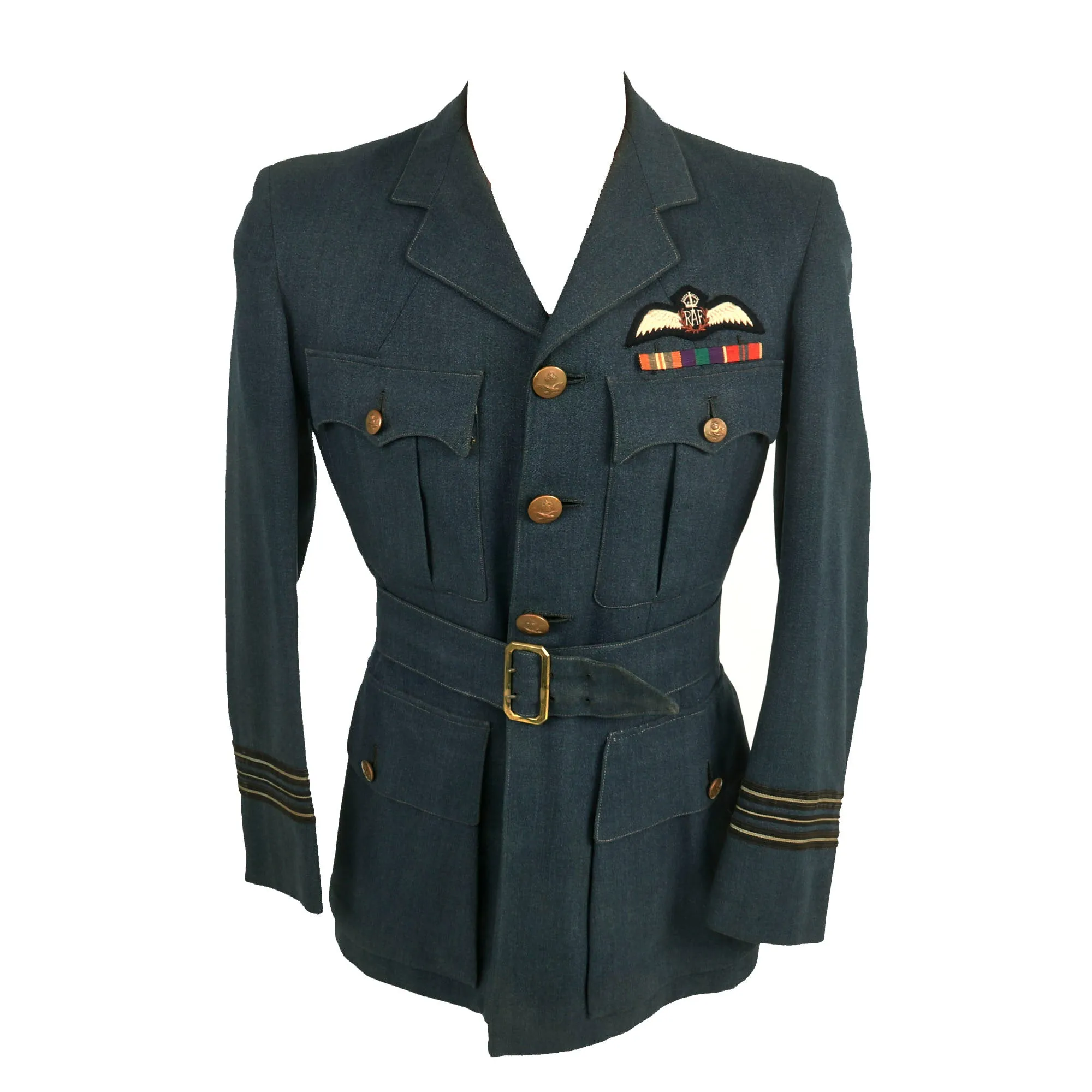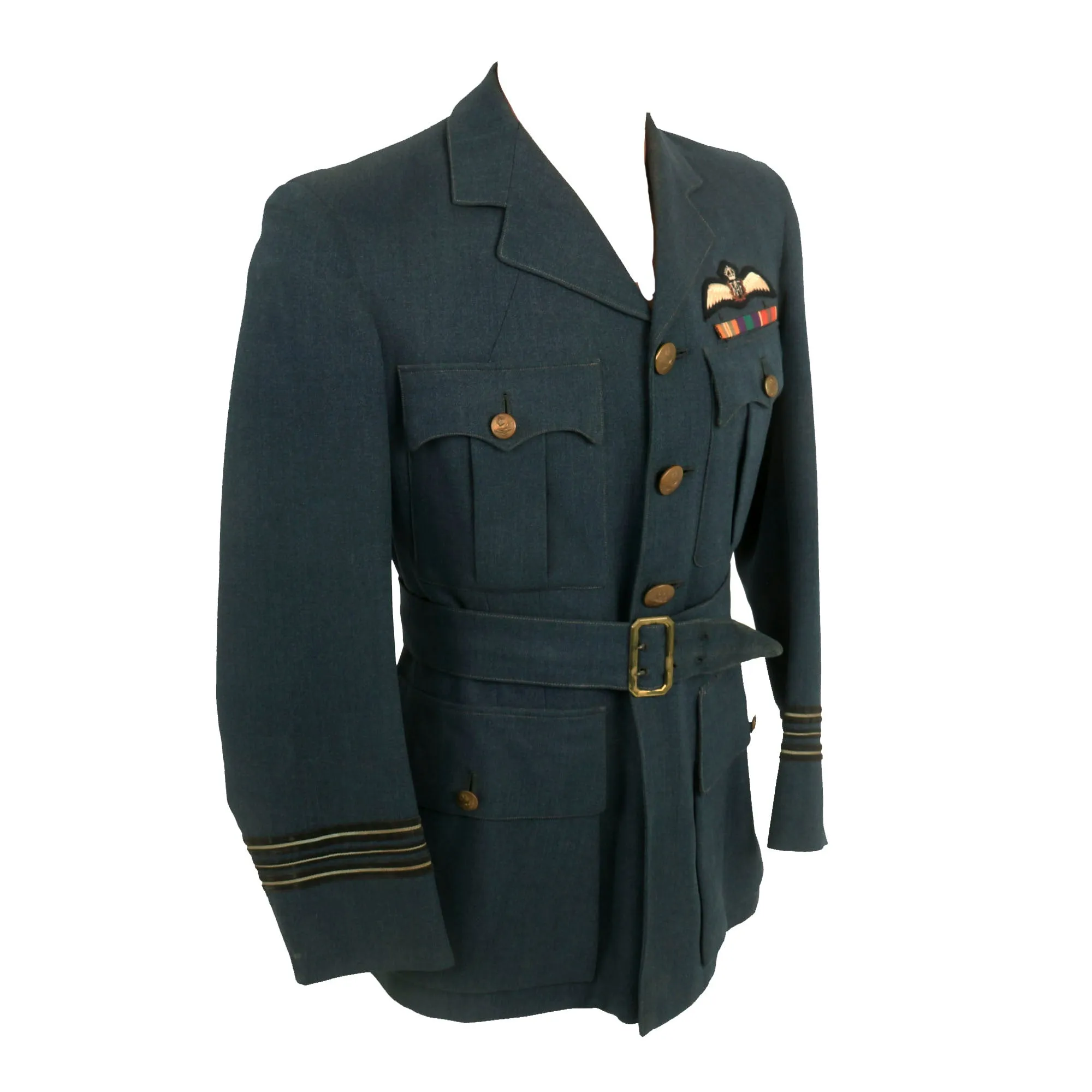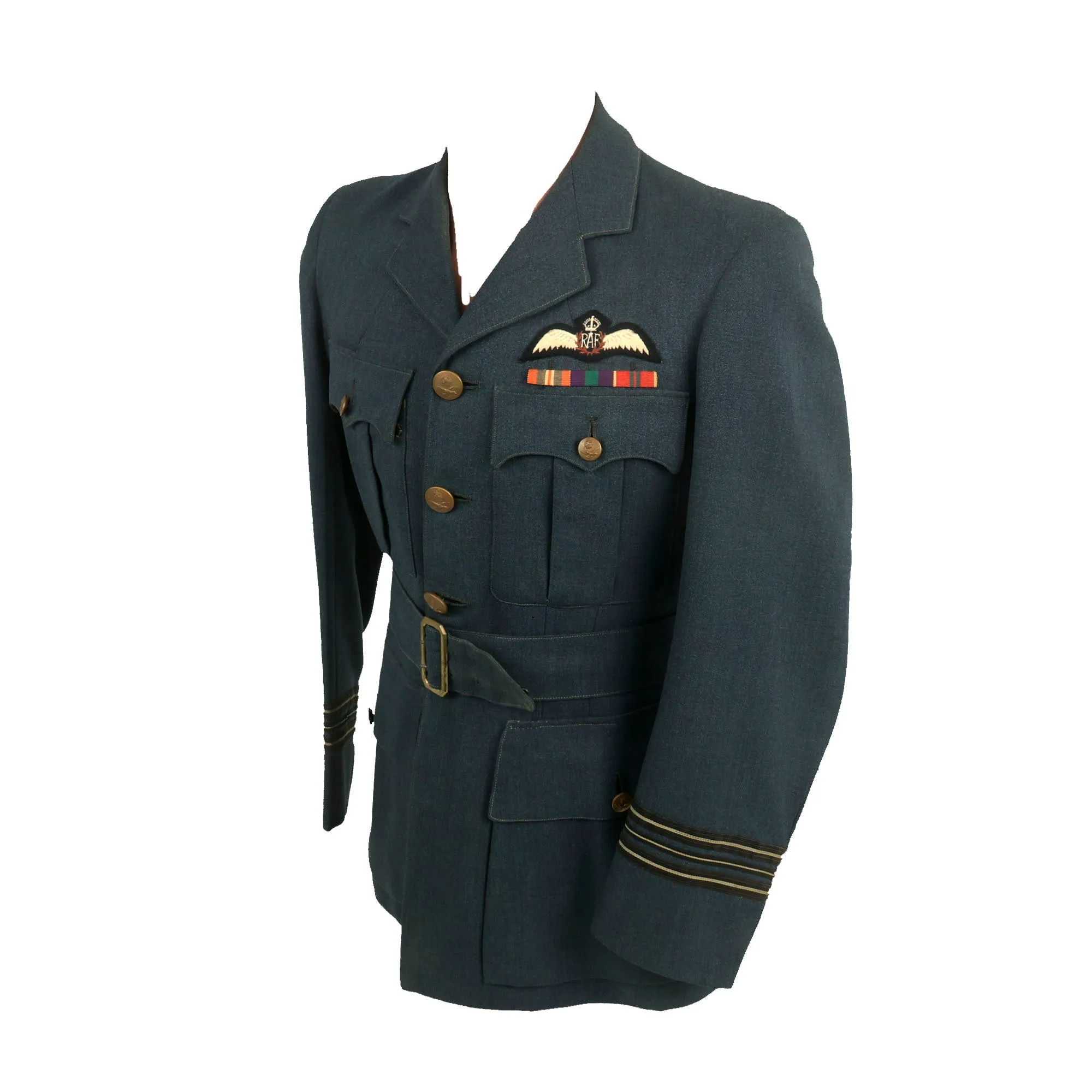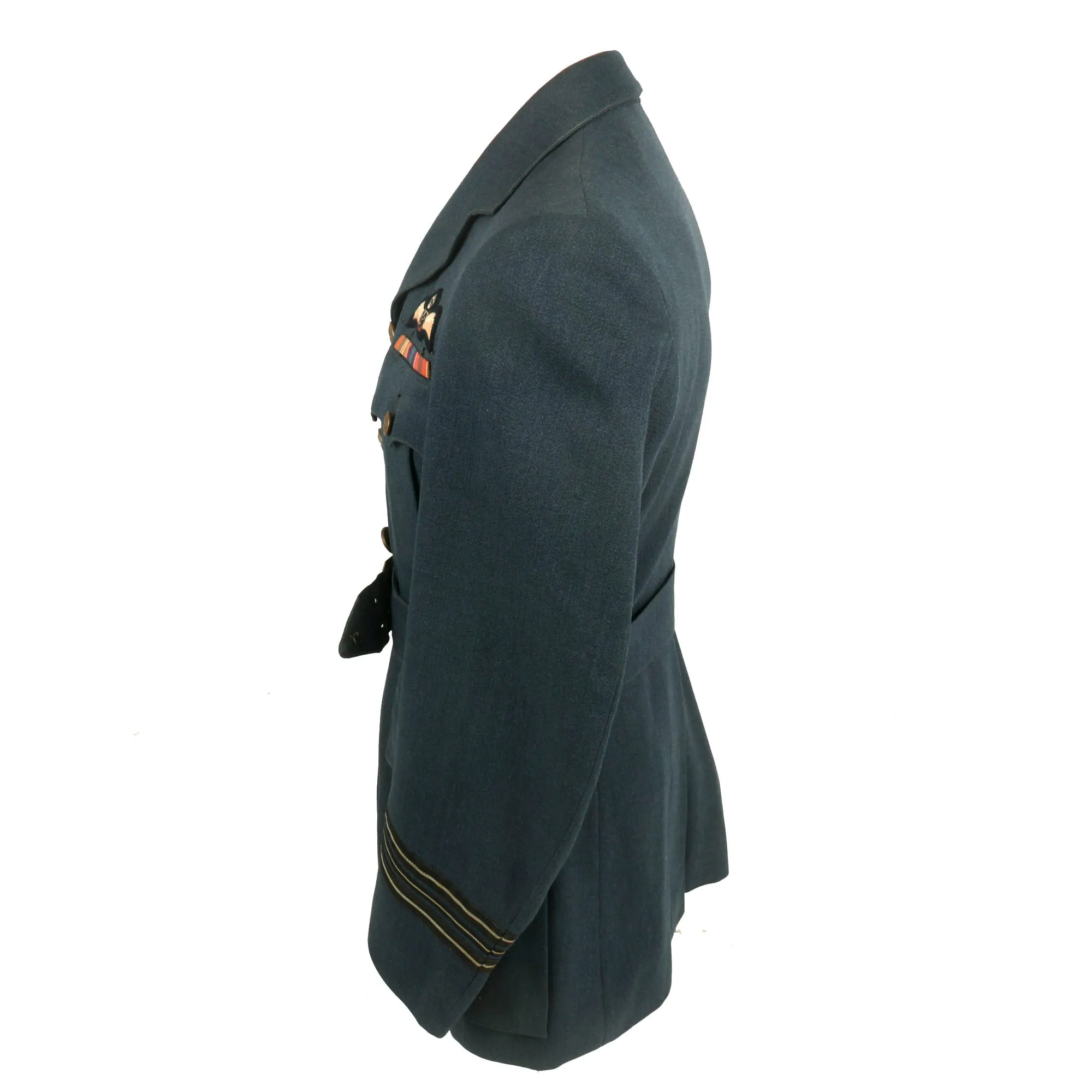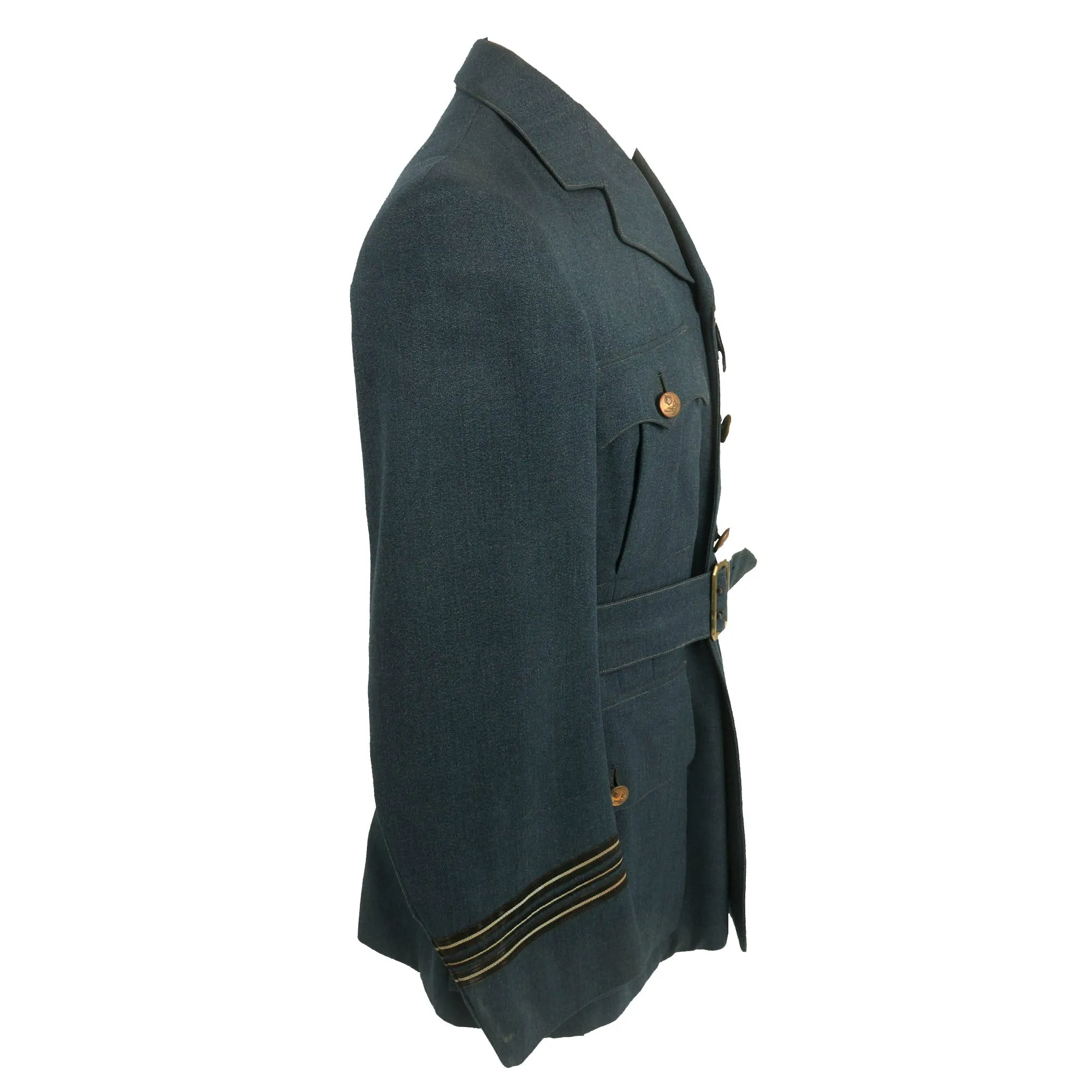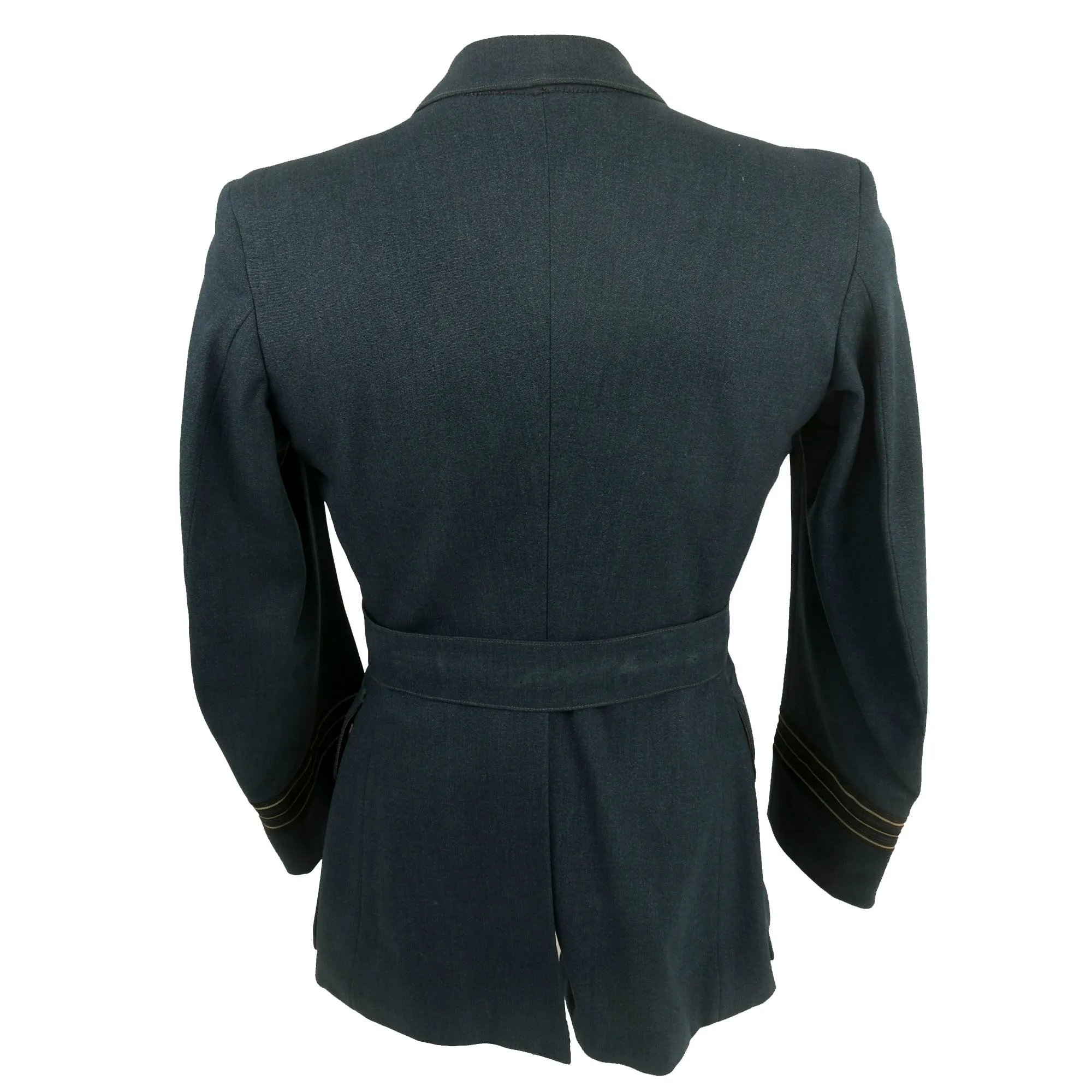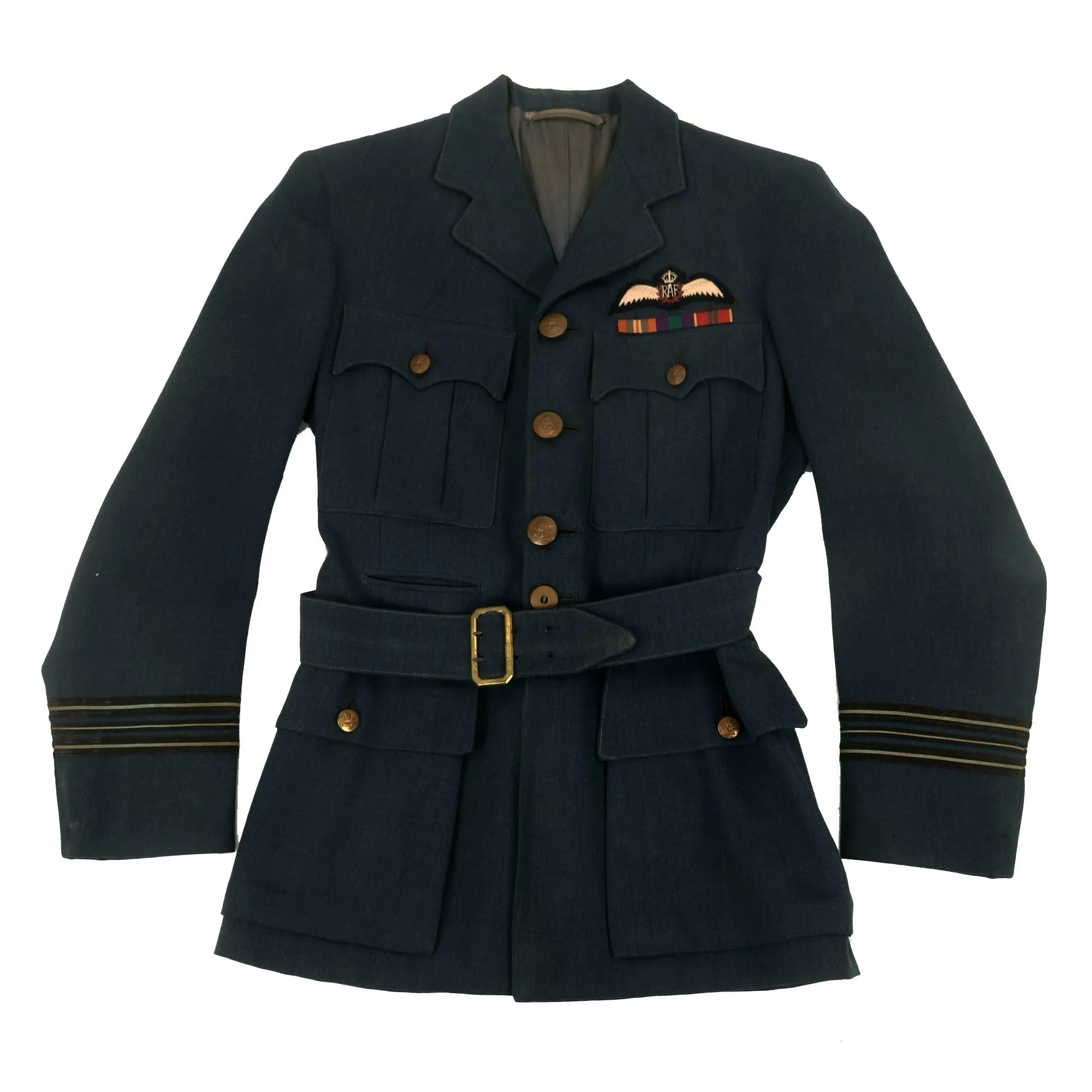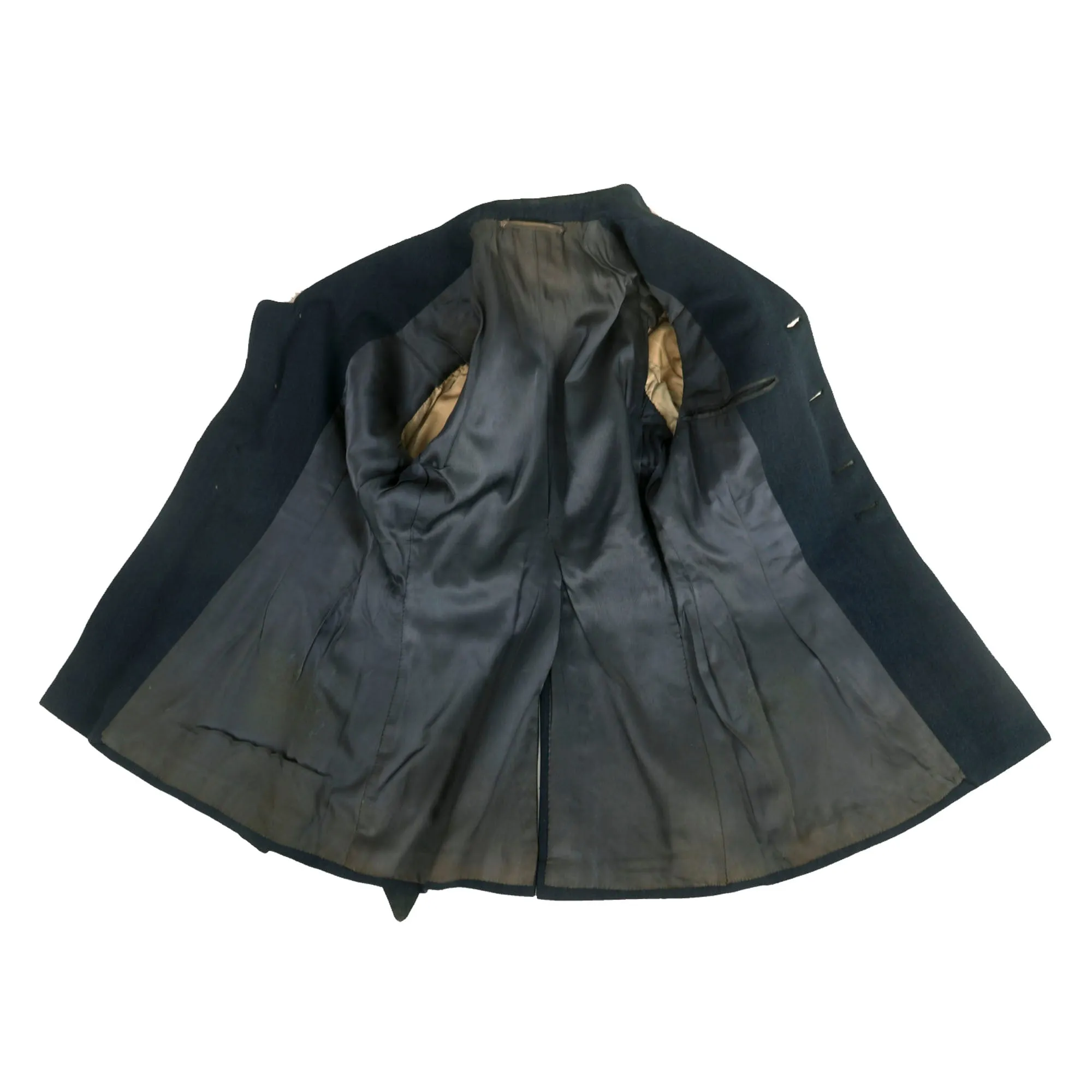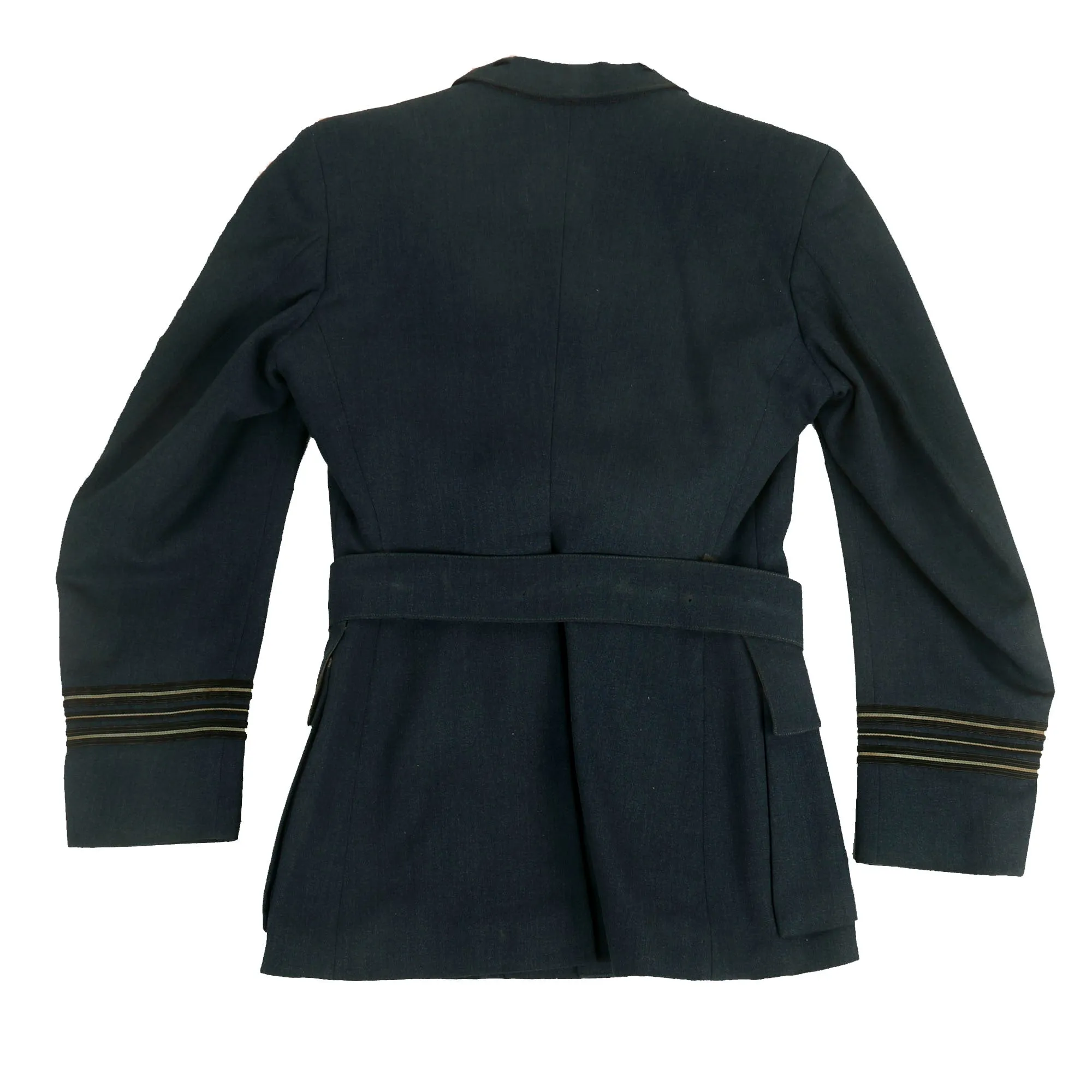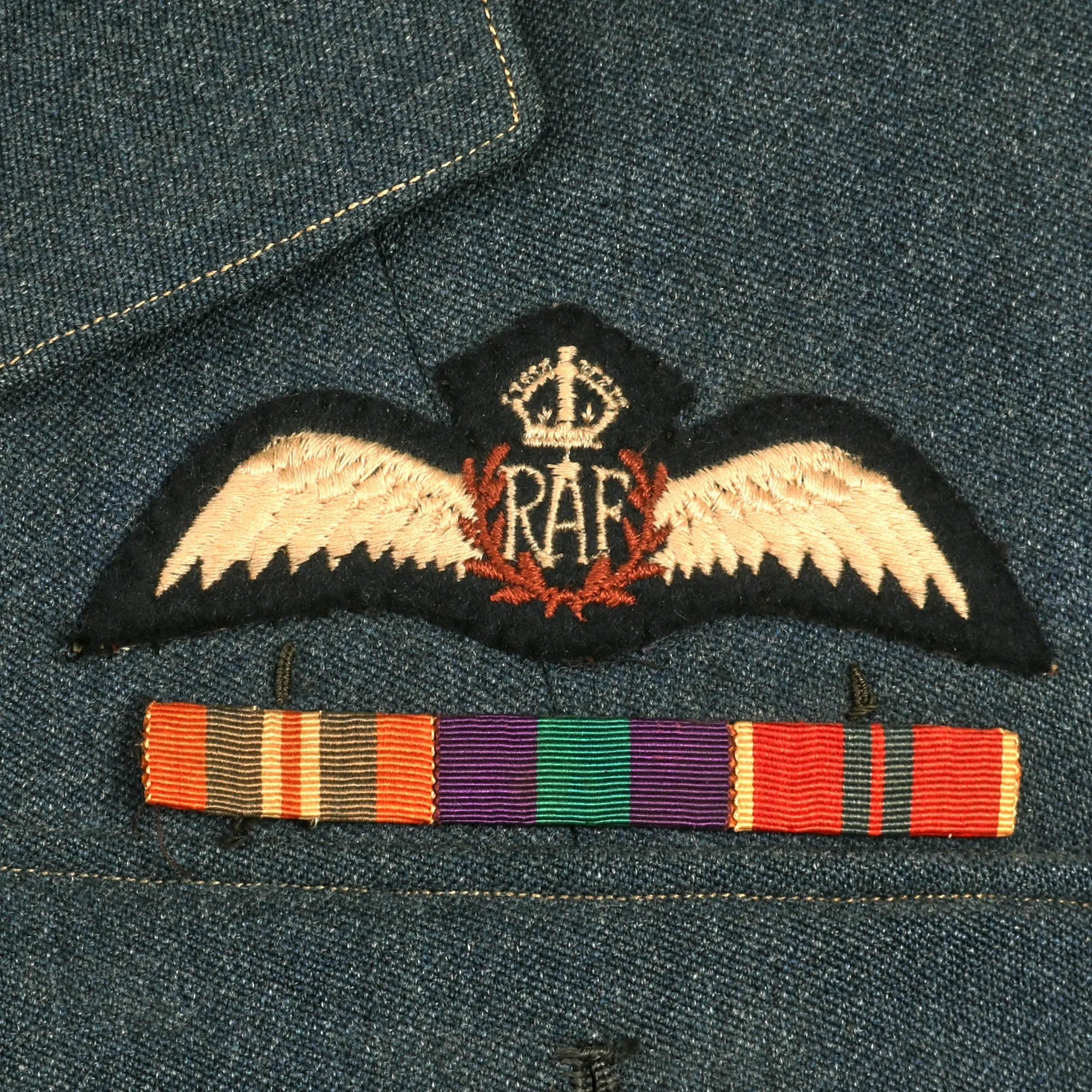Original Items: One-of-a-kind. This is a Tailor-made Battle Dress Uniform set that belonged to RAF Squadron Leader A. R. Saton. No research has been conducted on this individual, so there’s much potential with this uniform.
Included in this high quality uniform set is are the following:
- Blue wool RAF officer tunic marked to the rank of Squadron Leader. Approximates size US 40 offered in very good condition. Features embroidered RAF wings, and medal ribbons for the 1939 War Medal, the General Service Medal, and the Queen Elizabeth II Coronation Medal. The internal chest pocket bears a tailor label from MOSS BROS & CO LTD of London, W.C. and is ink marked E/LT. A. R. SATON BR27/413. The jacket is in fantastic condition with a few condition issues. The front right breast pocket is missing one of its snaps. The belt still functions very well.
- Blue wool RAF officer’s breeches in impeccable condition with very few flaws.
Overall a very nice hard to find Royal Air Force Squadron leader uniform from the early part of World War Two offered in very good condition.
The RAF underwent rapid expansion prior to and during the Second World War. Under the British Commonwealth Air Training Plan of December 1939, the air forces of British Commonwealth countries trained and formed "Article XV squadrons" for service with RAF formations. Many individual personnel from these countries, and exiles from occupied Europe, also served with RAF squadrons. By the end of the war the Royal Canadian Air Force had contributed more than 30 squadrons to serve in RAF formations, similarly, approximately a quarter of Bomber Command's personnel were Canadian. Additionally, the Royal Australian Air Force represented around nine percent of all RAF personnel who served in the European and Mediterranean theatres. During the Battle of Britain in 1940, the RAF defended the skies over Britain against the numerically superior German Luftwaffe. In what is perhaps the most prolonged and complicated air campaign in history, the Battle of Britain contributed significantly to the delay and subsequent indefinite postponement of Operation Sea Lion, His plans for an invasion of the UK. In the House of Commons on 20 August, prompted by the ongoing efforts of the RAF, Prime Minister Winston Churchill made a speech to the nation, where he said "Never in the field of human conflict was so much owed by so many to so few".
The largest RAF effort during the war was the strategic bombing campaign against Germany by Bomber Command. While RAF bombing of Germany began almost immediately upon the outbreak of war at first it was ineffectual; it was only later, particularly under the leadership of Air Chief Marshal Harris, that these attacks became increasingly devastating, from early 1943 onward, as new technology and greater numbers of superior aircraft became available.[19] The RAF adopted night-time area bombing on German cities such as Hamburg and Dresden. Night time area bombing constituted the great bulk of the RAF's bombing campaign, mainly due to Harris, but it also developed precision bombing techniques for specific operations, such as the "Dambusters" raid by No. 617 Squadron,[20] or the Amiens prison raid known as Operation Jericho.





